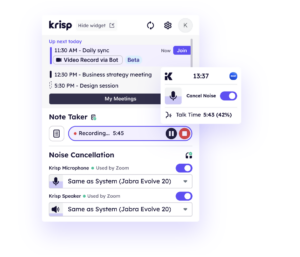Creating a positive group dynamic within a team can lead to higher productivity, employee satisfaction, and workplace success. But what exactly are team dynamics, and why are they so crucial in a workplace environment?
In this guide, we’ll break down the essence of effective team dynamics, explore what are examples of effective team dynamics, and provide tips for leaders to flourish.
In a Few Words, What is Team Dynamics?
Team dynamics refer to the psychological and behavioral relationships between group or team members. Essentially, it’s about how team members interact, communicate, and collaborate, impacting their overall performance. Effective team dynamics foster open communication, mutual respect, and a shared sense of responsibility toward team goals.
Importance of Team Dynamics
The success of any team hinges not just on the individual skills of its members but on how effectively these individuals work together.
Positive group dynamics guarantee seamless collaboration, encourage knowledge-sharing, and promote innovation. On the other hand, bad team dynamics can lead to miscommunication, mistrust, and a significant drop in productivity.
What are Effective Team Dynamics?
Effective team dynamics is the harmonious interactions between team members that drive collaboration, productivity, and a sense of unity.
The key elements contributing to these positive dynamics include open communication, trust, mutual respect, and well-defined roles. Let’s explore these essential elements in more detail to understand what makes team dynamics truly effective.
Transparent Communications
Transparent communication is the backbone of effective team dynamics. When team members openly share their ideas, concerns, and progress, it fosters a culture of trust and accountability. This transparency reduces misunderstandings and improves cooperation among colleagues.
Here are some ways to implement transparent communications within your team:
- Organize short, focused meetings where team members can quickly update each other on their progress and raise concerns.
- Encourage leaders to maintain an open-door policy, allowing team members to express their thoughts, feedback, or challenges freely.
- Implement bi-weekly or monthly feedback sessions to discuss team and individual progress transparently, reinforcing accountability.
Culture of Collaboration and Teamwork
An environment where everyone is encouraged to collaborate, regardless of position, builds strong team dynamics.
Group dynamics in the workplace flourish when there’s a shared belief that all contributions matter. An effective team leader should champion collaboration and lead by example, showing that teamwork does make a difference.
Practical ways to implement this are:
- Initiate projects that require input from different departments or specializations, encouraging team members to work together toward a shared goal.
- Set up a buddy system where experienced team members mentor new or junior colleagues, promoting knowledge sharing and collaboration.
- Organize activities like workshops or offsite events to help team members build bonds outside of their typical work environment.
Supportive Environment
Creating a supportive environment is essential to maintaining effective team dynamics. Leaders and peers should consistently uplift each other, offering help and guidance whenever needed. This not only boosts morale but also strengthens interpersonal bonds within the team.

Practical ways to make it possible:
- Implement a “kudos board” or recognition program where team members can publicly appreciate their peers’ contributions.
- Schedule one-on-one meetings between leaders and team members to check their well-being and address concerns or challenges.
- Provide training sessions or access to courses for team members to upskill and feel supported in their growth.
Healthy Competition
While excessive competition can be damaging, a healthy level of competition can drive the team to new heights. An effective team leader should encourage friendly rivalry that focuses on achieving individual growth while also contributing to collective goals.
Practical ways to implement this:
- Introduce challenges or leaderboards where team members can compete healthily to achieve targets or milestones without negative consequences.
- Recognize and reward individual contributions within the context of team success to maintain a balance between cooperation and competition.
- Organize skill-based contests or hackathons where team members can showcase their abilities in a supportive and enjoyable setting.
Constructive Feedback Systems
Feedback is a critical component of group dynamics in the workplace. A constructive feedback system enables employees to understand their strengths and identify areas for improvement. An effective team leader should regularly seek feedback from team members and promote a culture of growth and learning.
Here’s how to encourage a culture of feedback:
- 360-degree feedback: establish a system where feedback is gathered from peers, subordinates, and supervisors to provide a well-rounded view of each team member’s performance.
- Train team members on giving and receiving constructive feedback to ensure discussions remain productive and non-judgmental.
- Schedule regular check-in sessions to provide timely feedback rather than waiting for annual reviews.
Robust Leadership
Effective team dynamics start with solid leadership. A robust leader sets clear goals, maintains open communication channels, and guides the team through challenges. They act as a stabilizing force, fostering collaboration and supporting their team in achieving collective goals.
We talk about how leaders can up their game on becoming better for their team in the next paragraphs, so keep reading till the end to find out.
Conflict Resolution Mechanisms
Disagreements are inevitable in any group setting.

However, effective team dynamics rely on having conflict resolution mechanisms in place. Leaders should encourage open discussions to address conflicts and ensure team members feel heard and respected. This helps prevent minor issues from escalating into more significant problems. To be able to establish conflict resolution mechanisms, companies can do the following:
- Train leaders and team members on conflict resolution strategies like active listening, mediation, and assertive communication.
- Appoint neutral mediators within the team or HR to facilitate discussions when conflicts arise.
- Establish clear policies for addressing and resolving conflicts, emphasizing transparency and fairness.
Inclusion and Diversity
Diverse teams bring varied perspectives, enrich discussions, and lead to innovative solutions. Promoting inclusion ensures that every team member feels valued and empowered to contribute, which is a hallmark of effective team dynamics.
Ways to implement inclusion and diversity are:
- Focus on creating a diverse team by recruiting members from varied backgrounds and ensuring a fair hiring process.
- Implement training sessions to raise awareness about unconscious biases and promote an inclusive mindset among all team members.
- Actively seek input from all team members during critical discussions to ensure diverse viewpoints are considered.
Flexibility in Facing Challenges
Teams that are adaptable and willing to pivot in response to changing circumstances often demonstrate the most effective team dynamics. Flexibility involves being open to new ideas, adjusting strategies as needed, and supporting one another during transitions or challenges.
Ways to implement this are:
- Implement agile methodologies, such as daily stand-ups, sprints, and retrospectives, to keep the team flexible and adaptable.
- Foster a culture where trying new approaches and learning from mistakes is valued rather than feared.
Equal Reward Strategies
Recognizing and rewarding contributions equally is crucial in maintaining positive group dynamics. Unequal reward distribution can create divisions within the team. By establishing fair and transparent reward systems, team leaders can motivate all members and foster a collaborative environment. It helps to clearly define the criteria for bonuses, promotions, and other rewards to avoid bias or favoritism.
Burnout Management
In high-pressure environments, managing burnout is vital to effective team dynamics.

Leaders should prioritize work-life balance, encourage breaks, and provide mental health support. This not only boosts employee morale but also improves productivity and job satisfaction.
- Promote regular breaks and encourage team members to take paid leave to recharge and maintain their mental well-being.
- Regularly assess team members’ workloads to ensure they aren’t overwhelmed and distribute tasks evenly when needed.
- Offer access to resources such as mental health professionals or wellness programs to support employees’ overall well-being.
Clarity in Roles and Responsibilities
One of the cornerstones of good team dynamics is a clear picture of roles and responsibilities.
Collective ownership of team goals is achieved when each team member understands their duties and how their contributions impact the larger picture. This clarity helps reduce confusion and align efforts toward achieving the team’s objectives.
Ways to clarify roles and responsibilities are:
- Organize sessions to discuss and clearly define each team member’s role, responsibilities, and expectations.
- Develop visual maps or charts that outline the roles and their interdependencies within the team.
- Schedule regular reviews to revisit and refine roles as projects evolve, ensuring everyone stays aligned.
What are Examples of Effective Team Dynamics in Real Life
Real-life examples of effective team dynamics can be observed in organizations that prioritize transparency, collaboration, and innovation. These companies cultivate environments where open communication, inclusion, and support are integral to their culture, allowing their teams to thrive.
1. Google

Google is frequently cited as a prime example of effective team dynamics due to its inclusive culture and emphasis on teamwork. The company actively encourages cross-functional collaboration through its flexible project structures. Google’s team members participate in regular brainstorming sessions known as “hackathons” or “sprints,” where all contributions are valued equally. This approach allows for the free flow of ideas and often leads to innovative solutions. Google’s famous “20% time” policy, where employees are encouraged to spend 20% of their work hours exploring personal projects, also fosters creativity and a sense of ownership.
2. Pixar

Pixar, a leader in the animation industry, has long been known for its collaborative and feedback-oriented culture. The company’s “Braintrust” meetings exemplify effective team dynamics in action. During these meetings, directors and key team members review ongoing projects and provide candid, constructive feedback. This transparent feedback system has played a crucial role in Pixar’s ability to produce high-quality films consistently.
3. Spotify

Spotify, a global leader in music streaming, has implemented a unique organizational structure called the “Spotify Model,” which emphasizes autonomy and collaboration. Teams at Spotify are organized into small, cross-functional groups called “squads,” each responsible for a specific part of the product. These squads are supported by “chapters” (groups with similar expertise) and “guilds” (communities with shared interests). This setup allows teams to work autonomously while remaining aligned with the company’s overall goals. It fosters both innovation and accountability within a supportive framework.
4. Atlassian

Atlassian, a leader in project management software, has prioritized building a culture of inclusion and diversity. The company actively supports diverse perspectives by encouraging team members from different departments and backgrounds to collaborate on projects. Atlassian’s emphasis on open communication and its “Team Playbook” — a guide to promoting effective teamwork — provide clear frameworks for resolving conflicts, aligning goals, and maintaining transparency. This commitment to inclusivity and teamwork has been central to Atlassian’s success in fostering positive group dynamics.
These organizations create a culture where collaboration and innovation thrive, leading to remarkable achievements.
What Are the Indicators of Bad Team Dynamics?
Not all team dynamics are positive. Bad team dynamics can seriously undermine performance and morale. Here are some clear indicators to watch out for:
Lack of Trust and Cooperation
Without trust, collaboration within a team becomes impossible. Distrust among team members leads to poor cooperation, secrecy, and fragmented efforts, ultimately hampering productivity and goal attainment.
Formation of Groups Within the Team
When smaller groups form within a larger team, it can lead to exclusion and communication barriers. They give rise to gossip, speaking behind teammates’ backs and ruining the healthy flow of team communications.

This fragmentation is a major red flag indicating poor team dynamics.
Lack of Boundaries for Employees
Teams with ineffective dynamics often struggle with unclear boundaries and responsibilities. Conflicts and confusion arise when employees don’t know where their roles begin or end.
No Tangible Goal-Setting
A lack of clear and achievable goals creates aimlessness within a team. Teams without well-defined goals lack direction and purpose, leading to a decline in overall performance and satisfaction.
Micromanagement
Micromanagement stifles creativity and demotivates employees. When leaders do not trust their team to work autonomously, it breeds resentment and stifles productivity. This is a clear sign of ineffective team dynamics.
Conflict Avoidance
Avoiding conflicts rather than addressing them often leads to unresolved issues simmering beneath the surface. Leaders should encourage healthy discussions to resolve disputes rather than letting them rot.
How do Leaders Improve Team Dynamics?
Leaders play a pivotal role in shaping and nurturing effective team dynamics. Improving the latter isn’t just about managing tasks—it’s about understanding the unique needs of each team member, aligning their efforts toward common goals, and much more. This section explores key strategies and practices leaders can adopt to strengthen their team’s cohesion and productivity.
Evaluate Your Team’s Performance
Effective leaders regularly evaluate their team’s performance to identify areas for improvement. Benchmarking against successful teams can provide insights into what’s working and what isn’t. For example, if a leader observes that a top-performing team consistently delivers projects on time due to their use of agile sprints and frequent check-ins, they might consider adopting similar agile practices to improve their own team’s efficiency. This practice helps leaders identify effective methods and pinpoint areas where their team could benefit from changes.
Study and Learn About Team Members
Leaders who take the time to understand their team members’ skills, interests, and motivations can create more unified teams. When leaders know their employees well, they can assign tasks more effectively and foster a sense of belonging.
Create a Positive Environment
Creating a positive work environment involves recognizing achievements, promoting open communication, and offering support during challenging times. Leaders who cultivate such an environment often see stronger teams and higher morale.
Be Adaptive and Flexible
Flexibility is critical to navigating changes smoothly. Leaders should model adaptability, demonstrating how to remain positive and solution-oriented even in the face of challenges. This encourages the team to embrace change rather than resist it.
Encourage Continuous Learning
Continuous learning is essential for growth. Leaders should encourage their teams to seek new knowledge, share insights, and stay updated on industry trends. This not only builds a stronger team but also drives individual development.
Lead by Example
Actions speak louder than words. Leaders who embody the values and behaviors they wish to see in their team members cultivate a culture of integrity, accountability, and respect.
Leaders who lead by example, showing trust and respect, inspire their teams to do the same. When team members feel respected and trusted, they are more likely to collaborate effectively and contribute to a positive group dynamic.
Tools Contributing to Effective Team Dynamics
Choosing the right tools creates and maintains effective team dynamics. These tools can help foster a culture of better communication, organize tasks, and promote productivity. Let’s take a look at several essential types of tools and their contributions:
1. Project Management and Task Coordination
Platforms like Trello and ClickUp provide a structured approach to managing tasks, timelines, and responsibilities. Trello’s board and card system allows teams to easily visualize and track project progress, while ClickUp offers versatile views, such as list, board, and calendar, helping teams stay aligned.
2. Communication and Collaboration
Slack and Microsoft Teams improve team communication by centralizing conversations in organized channels. Slack’s real-time messaging system, with dedicated channels for different projects or topics, allows teams to communicate without cluttering inboxes. Microsoft Teams goes a step further by seamlessly integrating with Office 365 apps, enabling collaborative document editing and file sharing within the chat interface. These tools encourage open dialogue that maintains a collaborative and inclusive environment.
3. Virtual Meeting and Noise Reduction
Maintaining clear and engaging virtual meetings is vital for remote and hybrid teams. Zoom and Google Meet offer essential features like video calls, screen sharing, and chat options, fostering face-to-face communication even from a distance. However, background noise can disrupt these meetings.
That’s where Krisp makes a difference. Krisp’s AI-powered noise-canceling technology filters out background sounds, allowing participants to communicate clearly without distractions. This feature helps maintain focus and ensures that meetings are productive and efficient.

Additionally, its set of features allows you to fully immerse yourself in the conversation of the call. That’s because Krisp transcribes those calls for you; you don’t need to take notes manually. But you can never tell what it feels like unless you try it yourself.
4. File Sharing and Centralized Documentation
Effective file sharing is critical to keeping teams on the same page. Google Workspace and Notion provide cloud-based solutions for real-time document collaboration and version tracking. Google Workspace’s shared drive system simplifies document access and editing, while Notion combines note-taking, task management, and knowledge sharing in a single platform. This helps teams maintain a cohesive information hub, reducing the back-and-forth often associated with distributed teams.
5. Employee Engagement and Feedback
Gathering feedback and engaging employees regularly can significantly improve team dynamics. Thus, tools like 15Five and CultureAmp offer comprehensive solutions for tracking employee well-being and gathering regular feedback. For example, 15Five’s weekly check-ins and goal-setting features enable managers to stay connected with their team members’ progress and morale. These tools foster a feedback-driven culture where employees feel their input is valued, leading to higher engagement and satisfaction.
Summing up
Effective team dynamics are crucial for building a productive and harmonious work environment. If, as a leader, you focus on transparent communication and a supportive culture, you can cultivate strong connections and trust within your teams. Throughout this guide, we’ve explored what are examples of effective team dynamics, drawing insights from real-life companies like Google, Pixar, and Netflix. These organizations have demonstrated that fostering an inclusive atmosphere, providing constructive feedback, and promoting open dialogue can lead to innovative solutions and a more engaged workforce.
With exemplary leadership strategies and tools in place, any team can achieve higher accountability and success.
Frequently Asked Questions


